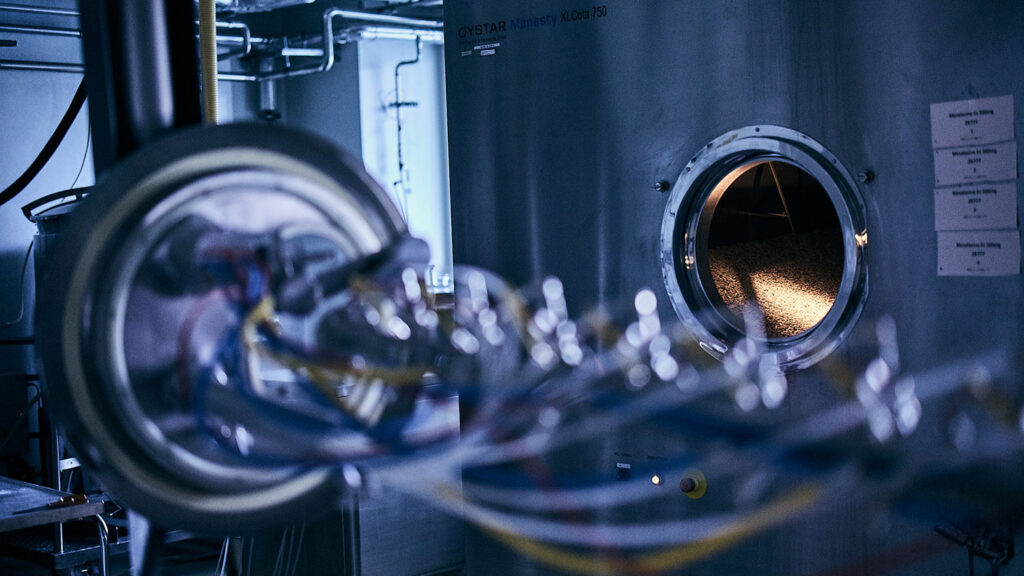To successfully develop and manufacture your polymer-based delivery systems, like implants and intra-vaginal rings, Sever Pharma Solutions has built advanced extrusion capabilities in Malmö (Sweden) and Putnam (US Connecticut). Alongside these capabilities, we have built deep knowledge and gained extensive experience over decades to support process and formulation development. Next to the application of extrusion for manufacturing delivery systems, the US site is a center of expertise for Hot Melt Extrusion (HME), a technology used to manufacture amorphous solid dispersions enabling solubilization of poorly water-soluble drugs.
Extrusion is a very suitable technology for continuously manufacturing polymer-based delivery systems with a fixed cross-sectional profile by pushing material through a die. A classic example is a cylindrical strand, which can be cut into pieces of defined length, and the resulting rods can be implantable dosage forms. The typical manufacturing process consists of the following unit operations:
or
Powder blending is a premixing step, and this operation can be performed with conventional equipment, for example, a bin blender. However, the principal mixing step in the process is the compounding of polymer, potentially other excipients, and API, which is commonly performed on a twin-screw extruder. Twin-screw extruders are very efficient mixing machines. However, twin-screw extruders perform less well in maintaining a constant flow rate through the extruder die. For this reason, single-screw extruders are preferred for shaping delivery systems in case very tight dimensional control is required.

The above-indicated process steps represent a robust standard for manufacturing polymer-based delivery systems. However, our scientists do not cling to standards. On a case-by-case basis, we may propose an alternative process set up when our scientists deem this a better solution for your manufacturing challenge. It is within the scope of our capabilities and knowledge base to support your development process from start to finish, including manufacturing supplies for all clinical phases of development and a seamless transition to commercial manufacturing. Moreover, our equipment is fully contained, warranting the safe handling of the highest potency APIs.
Next to using extruders for manufacturing delivery systems, the twin-screw extrusion capabilities in Putnam are also used for HME, a technology used to improve the bioavailability of poorly water-soluble drugs (BCS II and IV). During HME, crystalline API is dissolved in a suitable polymer using heat and shear generated in a twin-screw extruder. The US facility has various twin-screw extruders and an extensive library of more than 100 screw designs to support technical and GMP development.
Upscaling of HME processes on a twin-screw extruder is relatively straightforward, but reducing the scale of this process is challenging, and therefore, application in early-phase development is sometimes hampered by material availability. To anticipate this, suitable methodologies and capabilities have been developed within Sever Pharma Solutions to evaluate HME feasibility on a very small scale, as low as 10s of mg scale. Furthermore, the HME extrudate is an intermediate product requiring further processing into a solid oral dosage form, either a tablet or capsule, and for this purpose, milling of the extrudate, capsuling, and tableting capabilities have been installed in the Putnam facility.